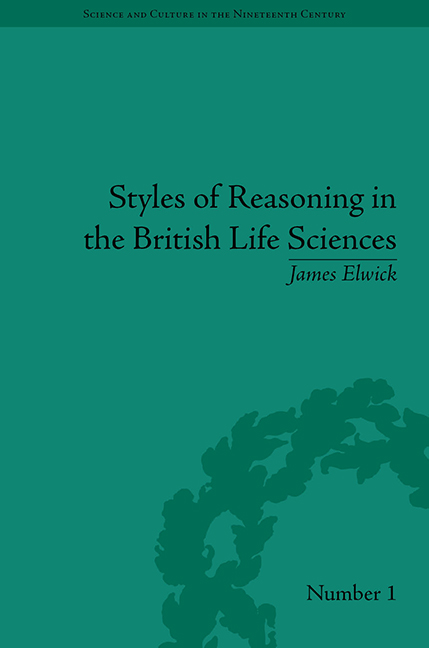1 - Analysis Part One
Summary
This chapter begins with several questions. What were some ways in which Britons reformed life research out of the ‘decline of science’ in the late 1820s and early 1830s? Why was there a strong link between philosophical anatomists and radicalism? Why was there an explosion of museums or museum reformation in the 1830s? Why was there a belief that organisms were compounded out of simple parts?
The first, more sweeping, part of this chapter establishes the context and suggests some answers to these queries. By the beginning of the 1830s there appeared a new emphasis in Britain on the style of analysis: synthesis, in which a system was broken up into components which were then studied (analysis), and the system rebuilt out of these components (synthesis). Although there were strong links between the style of analysis: synthesis, philosophical anatomy and calls for the rationalizing reform of British institutions, many researchers, regardless of their politics, embraced this style because of its emphasis on the museum. To illustrate the acceptance of analysis: synthesis, the second part of this chapter then switches perspective, focusing on concrete details. It examines how Owen's early work at the Hunterian Museum of the Royal College of Surgeons exemplified the use of analysis: synthesis. Owen's domestication of this style from its dangerous Francophile roots was one reason why he became the premier British comparative anatomist.
But Owen was merely one of a larger group of London-based life researchers. The best way to display this community is to take Martin Rudwick seriously and do so graphically, depicting their relationships and commitments as a topography. Figure 1.1 facilitates synchronic comparisons while also showing several diachronic changes between 1830 and 1850. Also informed by the work of A. H. Barr, Edward Tufte and Randall Collins, such a map allows us to see this book's cast of characters and their backgrounds at a glance.
- Type
- Chapter
- Information
- Styles of Reasoning in the British Life SciencesShared Assumptions, 1820–58, pp. 11 - 42Publisher: Pickering & ChattoFirst published in: 2014



